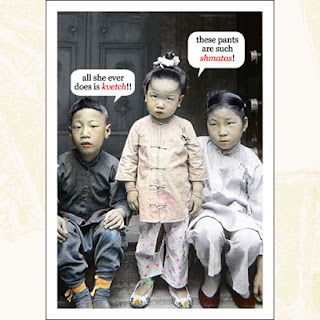 |
| Animal Crackers in your soup... |
 |
| and how do you say animal crackers in your soup in Japanese? |
 |
| and they are good for you!!! |
a
 |
| let's get this party rolling! |
 |
| Animal Crackers!!! |
The first animal cracker-shaped cookies were imported from England in the late 19th century. The demand for these cookies were so great that the Stauffer's Biscuit Company produced their first batch of animal crackers in York, Pennsylvania in 1871. Other domestic bakeries, including the Dozier-Weyl Cracker Company of St. Louis and the Holmes and Coutts Company of New York City, were the predecessors of the National Biscuit Company, today's "Nabisco Brands".
Animal biscuit crackers were made and distributed under the National Biscuit Company banner. In 1902, animal crackers officially became known as "Barnum's Animals" and evoked the familiar circus time theme. Later in 1902, the now-familiar box was designed for the Christmas season with the innovative idea of attaching a string to hang from the Christmas tree. Up until that time, crackers were generally only sold in bulk (the proverbial "cracker barrel") or in large tins. These small cartons, which retailed for five cents at the time of their release, were a big hit and are still sold today.
The number and variety of contained in each box has varied over the years. In total, 54 different animals have been represented by animal crackers since 1902. In its current incarnation, each package contains 22 crackers consisting of a variety of animals. The most recent addition, the
koala was added in September 2002 after being chosen by consumer votes, beating out the penguin, walrus and cobra.
In 1948, the company changed the product name to its current designation of "Barnum's Animal Crackers". Later, in 1958, production methods changed to improve the crackers' visual details. Until then animal shapes were stamped out of a dough sheet by a cutter. This produced outlines with little sophistication. By installing rotary dies, bakers can actually engrave details onto each cracker, creating a much more intricate design. The rotary dies are still used today.
Barnum's Animal Crackers are all produced in the Fair Lawn, NJ Bakery by Nabisco Brands. More than 40 million packages of Barnum's Animal Crackers are sold each year, both in the United States and exported to 17 countries worldwide. The crackers are baked in a 300-foot (91 m) long traveling band oven. They are in the oven for about four minutes and are baked at the rate of 12,000 per minute. Fifteen thousand cartons and 300,000 crackers are produced in a single shift, using some thirty miles of string on the packages. This runs to nearly 8,000 miles (13,000 km) of string a year. Those bright circus boxes are produced in three colors - red, blue and yellow - with different variety of animals on each.
In total there have been 37 different animals featured in Barnum's Animal Crackers since 1903. The current crackers are
tiger,
cougar,
camel,
rhinoceros,
kangaroo,
hippopotamus,
bison,
lion,
hyena,
zebra,
elephant,
sheep,


Some of Barnum's Animals
,
gorilla,
monkey,
polar bear,
seal and
giraffe. To celebrate its 100th anniversary, Barnum's added the
koala to the menagerie in September 2002.













 During the prior decades, a number of light-sensitive materials were tested to capture the image from the camera obscura, but the first successful permanent photograph is usually credited to Louis Daguerre.
During the prior decades, a number of light-sensitive materials were tested to capture the image from the camera obscura, but the first successful permanent photograph is usually credited to Louis Daguerre. 







































